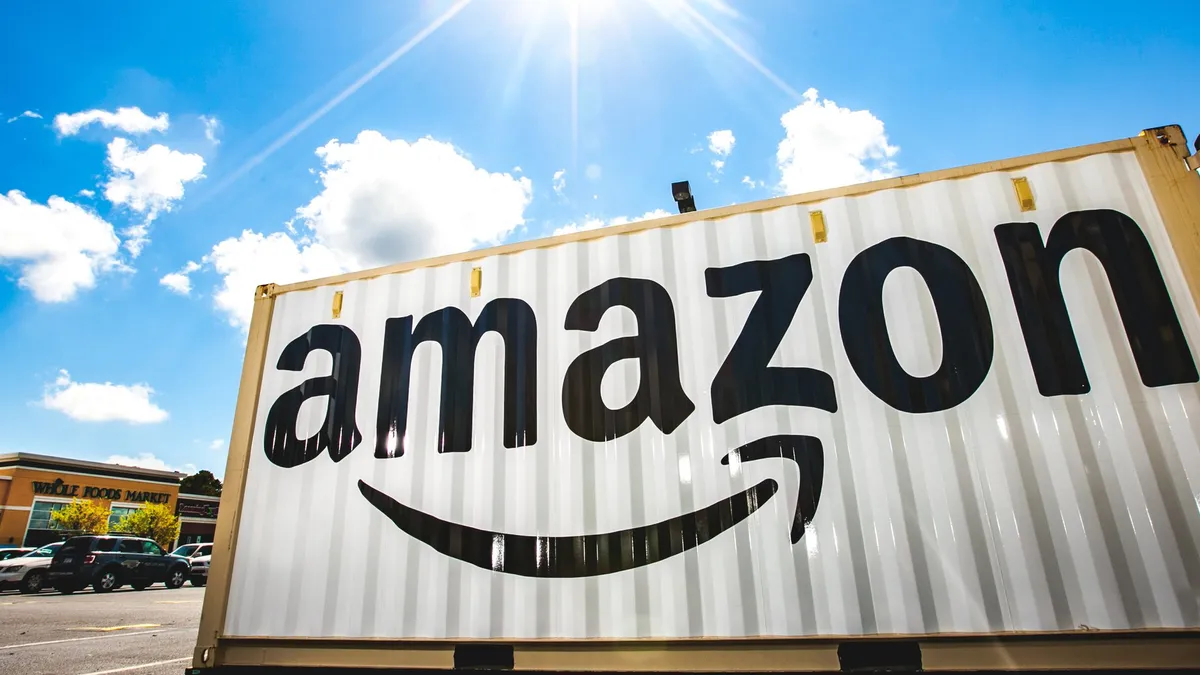The following is a guest post from Michelle Michael, vice president and general manager of Media Solutions at Brand Networks.
From toasters, diapers and coat racks to award-winning films and original TV shows, people turn to Amazon for almost everything. On top of that, the platform and its various media properties are embedded into our daily routines — from reading The Washington Post to watching "The Marvelous Mrs. Maisel." With advertisers bending over backward to meet customers where they are, it's increasingly likely that "where" is on Amazon (or owned by it).
Mary Meeker's 2018 Internet Trends report found that 49% of consumers start their product search directly on Amazon. Even more impressive, Amazon now has nearly 50% of all online retail spend in the U.S. e-commerce market, according to eMarketer. These are strong proof points for the opportunity the platform presents, and after exceeding 2018 revenue expectations, Amazon is acting fast to catch up with digital ad behemoths Google and Facebook.
However, there's an air of mystery surrounding this newer ad platform with an old reputation of giving small-to-midsize brands a run for their money. Many companies still neglect to consider Amazon because of a common misconception: You have to sell on Amazon in order to advertise there while spending a bunch of money in the process.
In reality, the door is wide open for brands of all sizes to reach Amazon's audience and leverage its growing set of ad capabilities. Once you decide to take the leap, the most successful Amazon advertisers will be those that master the two major elements that set it apart.
The buyer's mindset
Amazon fosters a purchase-friendly environment for consumers, granting access to billions of products that can be purchased in seconds and delivered to your door in just a few days. In this environment, when consumers are actively browsing for a product, movie or service, most advertisements are helpful, rather than interruptive.
By targeting consumers based on purchase behavior — such as "consumers who have searched for travel books" or "people who have browsed kitchenware" — you increase the likelihood of reach people who are both in your target market and ready to purchase.
This environment is unique to Amazon, and with customer buying insights that are second to none, the platform is giving brands of all sizes a leg up on competitors. Even better, you don't have to be a CPG brand to see results. Even internet service providers have begun to leverage the platform using technology purchases on Amazon as a trigger point for advertising faster service offerings.
Flexible audience targeting
With advertising inventory that extends well beyond Amazon's website, including Amazon-owned OTT platforms like IMDb Freedive and Fire TV and publications like The Washington Post, Amazon has a number of properties that let advertisers segment and target their audience wherever they are.
Importantly, advertisers can take user behavior insights from Amazon.com and use them across any Amazon-owned publisher or ad outlet. This gives brands the ability to test multiple campaigns on extremely focused audience segments and see results in their strategy before increasing their investment. For best results, you'll want to run multiple targeted campaigns to determine what's working. Once you identify a few segments and placement locations that have legs, trim the fat and continue to run campaigns that reach your audience in the most cost-effective way.
Getting Started
For brands considering Amazon Advertising, it can feel overwhelming at first. From deciding whether it fits with your existing media mix or navigating budget constraints, to choosing which vendor to work with (or none at all), there are a number of factors to consider at the start.
The good news is that when it comes down to it, the basics aren't all that different from advertising on more established platforms like Facebook or Google. From selecting your target audience using Amazon's myriad of customer insights to rebuilding existing creative that fits your channel of choice, it can be easy to add Amazon campaigns into the mix without throwing existing strategies off course.
With 80% of Amazon advertisers planning to increase their budgets on the platform this year, the company is on track to strengthen its position as the third-largest ad player in the U.S. Shying away from this rising advertising giant isn't an option, and doing it right will be as fruitful as your decision to sign up for Amazon Prime.














